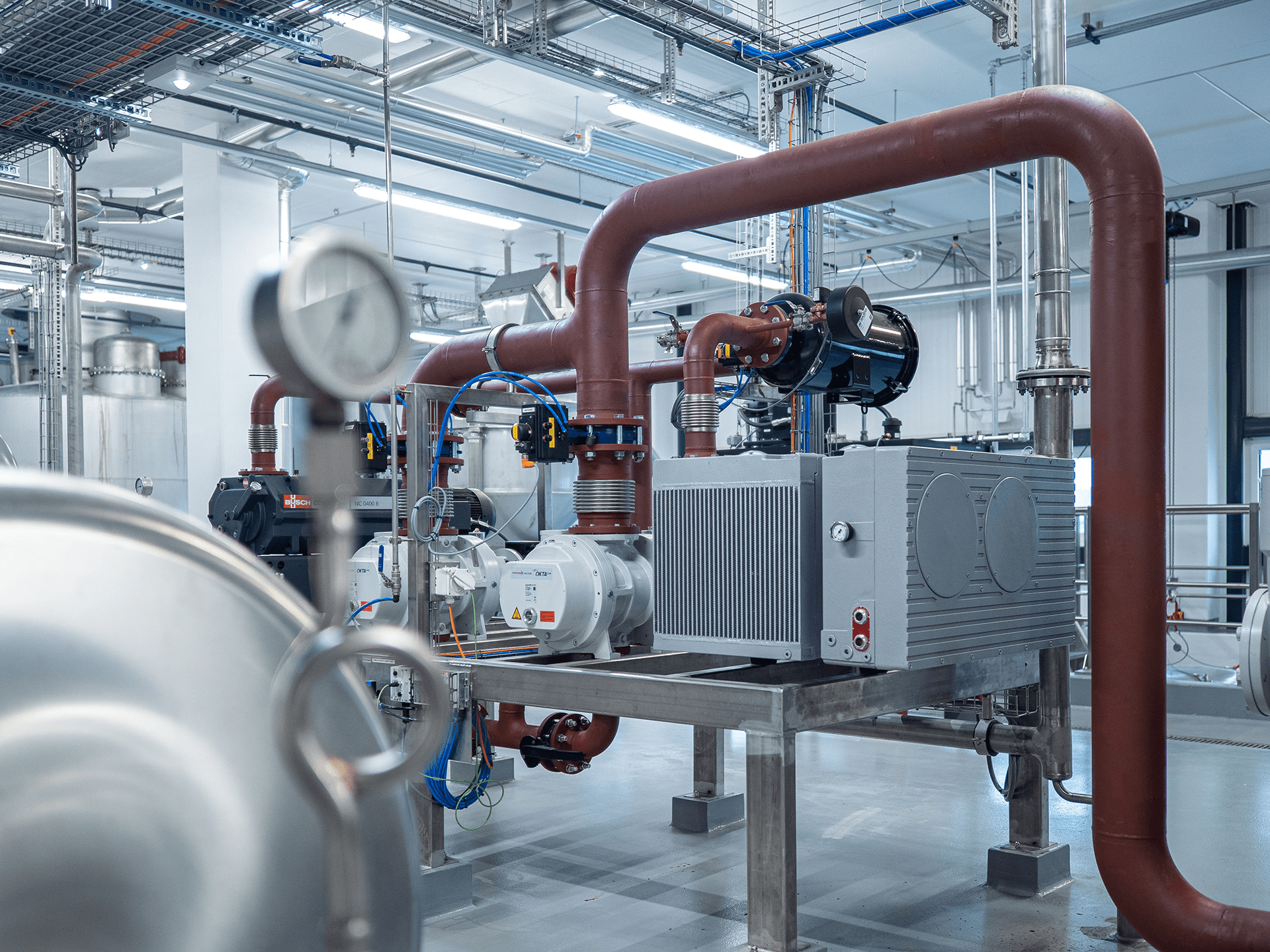Using the right concentration of Glycol in air-cooled chiller systems is essential if you want to avoid burst pipes and expensive repairs, and optimize energy efficiency.
But what is the right amount of Glycol to use for air-cooled chiller systems? Let’s get into it…
What Are Glycol Slush Points And Burst Points?
There are two freezing temperatures that need to be considered when selecting the required glycol percentage for an air-cooled chiller system:
- The slush point (or freezing point) – The temperature where crystals begin to form in the fluid.
- The burst point – The temperature where the entire solution solidifies, causing expansion, which can lead to burst pipes or heat exchangers.
Between the slush point and the burst point, the solution is in a mixed phase (solid and liquid) state, but still acts as a fluid.
At this point, a chiller cannot be operational, as the frozen crystals risk damaging the heat exchangers. However, the risk of bursting pipes or heat exchangers is minimal if the chiller is shut off, since the solution can still flow and the expansion from ice formation is very limited.
To prevent damage to the air-cooled chiller, the glycol percentage must ensure the slush point is avoided during operation and the burst point is avoided during shutdown.
Burst And Slush Points For Propylene Glycol (P.G.) And Ethylene Glycol (E.G.)
35% Concentration
| Type | Slush Point | Burst Point |
| Propylene Glycol | 0°F (-17ºC) | Below -40°F (-40ºC) |
| Ethylene Glycol | -3°F (-19.4ºC) | Below -40°F (-40ºC) |
At a 35% concentration, both Propylene Glycol (P.G.) and Ethylene Glycol (E.G.) have a burst point below -40°F (-40ºC). The slush point is 0°F 0°F (-17ºC) for P.G. and -3°F (-19.4ºC) for E.G.
40% Concentration
| Type | Slush Point | Burst Point |
| Propylene Glycol | -8°F (-22.2°C) | -60°F (-51.1ºC) |
| Ethylene Glycol | -13°F (-25°C) | -60°F(-51.1ºC) |
At a 40% concentration, the burst point for both glycols drops to around -60°F (-51.1ºC), with slush points of -8°F (-22.2°C) for P.G. and -13°F (-25°C) for E.G.
Therefore, 40% glycol is sufficient for air-cooled chillers operating down to -8°F (-22.2°C).
Below this, when the chillers are shut down, the system will still be safe from freezing and bursting to well below the lowest ambient temperatures in our climate.
Achieve Significant Efficiency Gains By Using Appropriate Glycol Concentrations
For most comfort cooling applications, chillers typically don’t need to operate in extremely low ambient conditions. Once the ambient temperature drops sufficiently, airside-free cooling options can often be utilized.
Choosing a higher glycol percentage than needed in a cooling system primarily affects the efficiency of the chiller and pump.
Glycol solutions have a lower heat transfer coefficient than water, reducing the performance of the chiller’s evaporator and any terminal units like AHUs or fan coils. In addition, the pump power will increase due to the increased viscosity of the solution.
Some systems use a heat exchanger to isolate the glycol loop from the chiller, but this doesn’t fully mitigate the derate. The heat exchanger requires a minimum temperature differential, so the indoor chilled water loop must be 2-3°F warmer than the glycol loop, still reducing the indoor coil’s cooling capacity. This also adds complexity and extra maintenance, as another piece of equipment is required.
A 50% glycol concentration is typically unnecessary for air-cooled chiller systems, unless they operate at extremely low ambient temperatures. By basing the glycol percentage on the slush point and the chiller’s minimum operating temperature, significant efficiency gains can be achieved.
We hope this post was helpful, and if you have any further questions about Air-Cooled Chillers or other HVAC/R systems, contact us anytime, we’d be happy to help you out!


